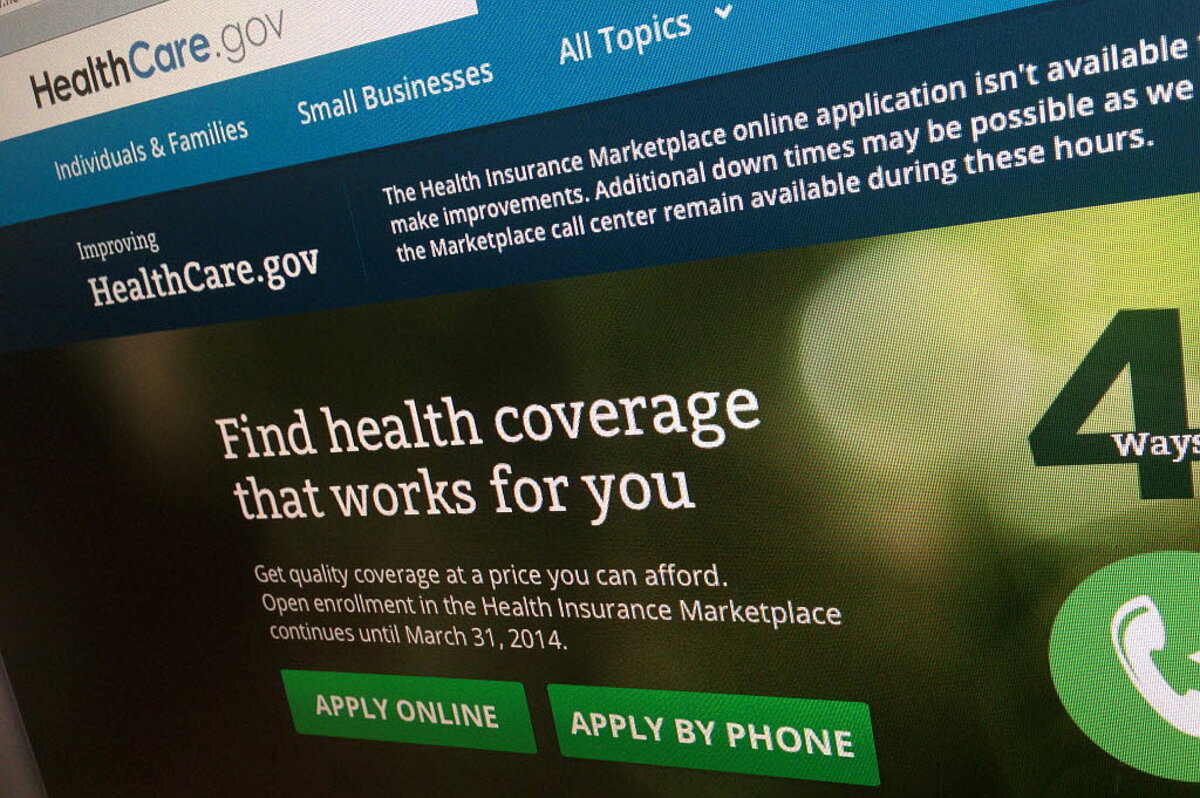Obamacare sign-ups: Is deadline surge to 7 million target possible?
Loading...
| Washington
Sign-ups for health insurance under Obamacare are accelerating as a March 31 deadline nears.
That’s the message embedded in news that total enrollments in the law’s health insurance marketplaces are , up from 4.2 million when the month began.
A stepped up pace was expected as the deadline grew closer, but the pick-up in recent weeks raises an intriguing question: Could a last-minute surge push total enrollment high enough to match early projections of 7 million?
It still looks like a stretch for that to happen. The Department of Health and Human Services announced Monday that in the first half of March, including this past weekend, enrollment rose by about 800,000 people, or about 0.4 million per week.
To hit 7 million, though, the Affordable Care Act (ACA) would have to hit a home-stretch pace of more than twice that clip – some 1 million per week.
Don’t rule that out as impossible. Consider that, amid the glitch-ridden launch of the federal website for dozens of state-level marketplaces, one enrollment surge has already happened.
Back in December, when many people were seeking to lock in Obamacare coverage starting on Jan. 1, ACA enrollment jumped to 1.8 million for the month, swamping the minuscule levels of activity seen earlier in the sign-up period. (The first two months saw 364,000 people enroll.)
Again, though, getting to 7 million would require a considerable surge – essentially squeezing a December-size tally into just two weeks.
The Obama administration, even as it has downplayed the notion that 7 million is a benchmark or success or failure, is striving to ramp up activity for the federal Healthcare.gov website and for the states that run their own ACA sign-up websites.
The Health Department issued a new call Tuesday for Americans not only to sign up but to “spread the word” via social networks like Facebook. President Obama appeared on a comic Internet talk show last week to pitch youth enrollment.
And on Monday, the White House rolled out its own “,” aimed not at basketball predictions but at getting people to choose things they like best about Obamacare.
One recent public opinion survey has already provided some answers to that question.
The provisions that enjoyed majority support in the poll were allowing children to stay on their parents’ plans up to age 26 (supported by 73 percent), barring insurers from denying coverage based on a person’s preexisting health condition (supported by 65 percent), and eliminating insurers’ lifetime caps on what they’ll pay for a person’s care (supported by 53 percent).
Only 47 percent say they like the law’s “individual mandate” that uninsured Americans get health coverage – the provision that’s behind the March 31 deadline. The 2010 law called on households to purchase coverage, but also provided for subsidies and an expansion of Medicaid to help make it affordable.
Some 51 percent of Americans in the new Bloomberg National Poll say the mandate should be repealed.
The idea that enrollment should reach 7 million emerged from a Congressional Budget Office forecast of how the law would affect the number of insured and uninsured Americans.
That same forecast envisioned the law reducing the ranks of the uninsured considerably over time, but not achieving universal coverage.
One hurdle to ramping up last-minute sign-ups is economic. Although many households qualify for federal subsidies, many others find that the premiums in popular “silver” plans aren’t cheap compared with the modest penalties for skipping coverage.
Another hurdle is simple lack of awareness.
Another recent survey, Bankrate.com’s survey, found that most Americans don’t know the law offers tax credits to reduce the cost of insurance. Many, too, don’t know about the end-of-month deadline.
Whether enrollment by March 31 totals 7 million or 6 million or some other number, the real test of the law’s success ultimately lies in other measures – notably how people like the care they get using the new marketplaces, and what happens to the cost of care.





